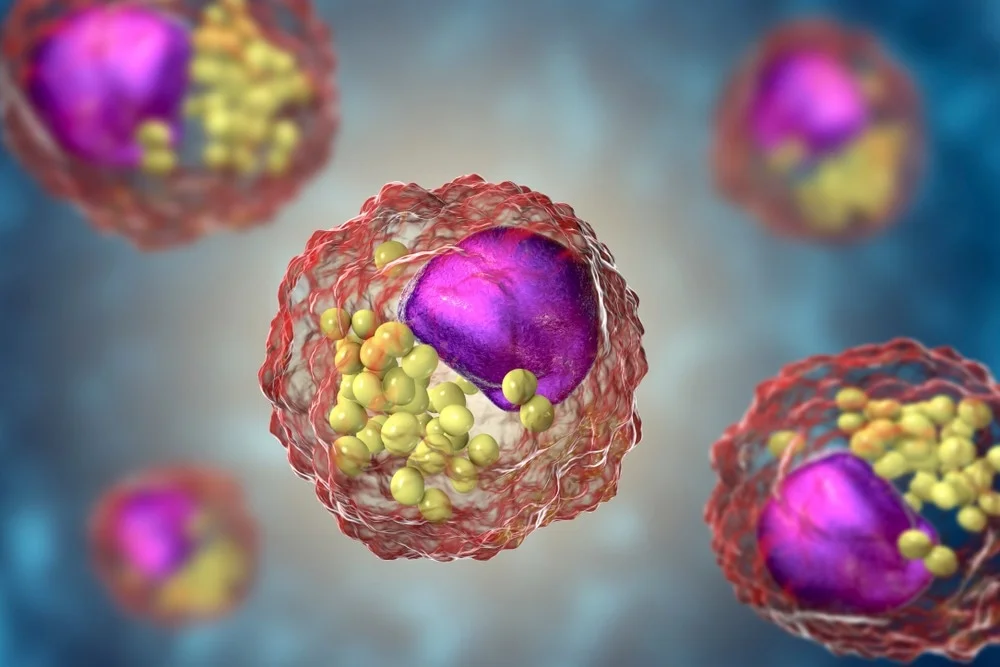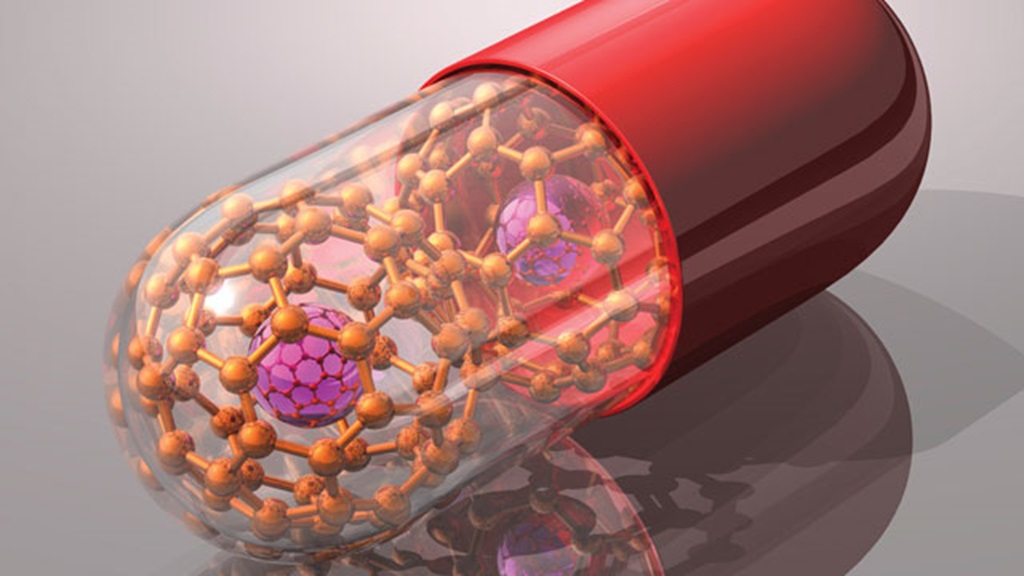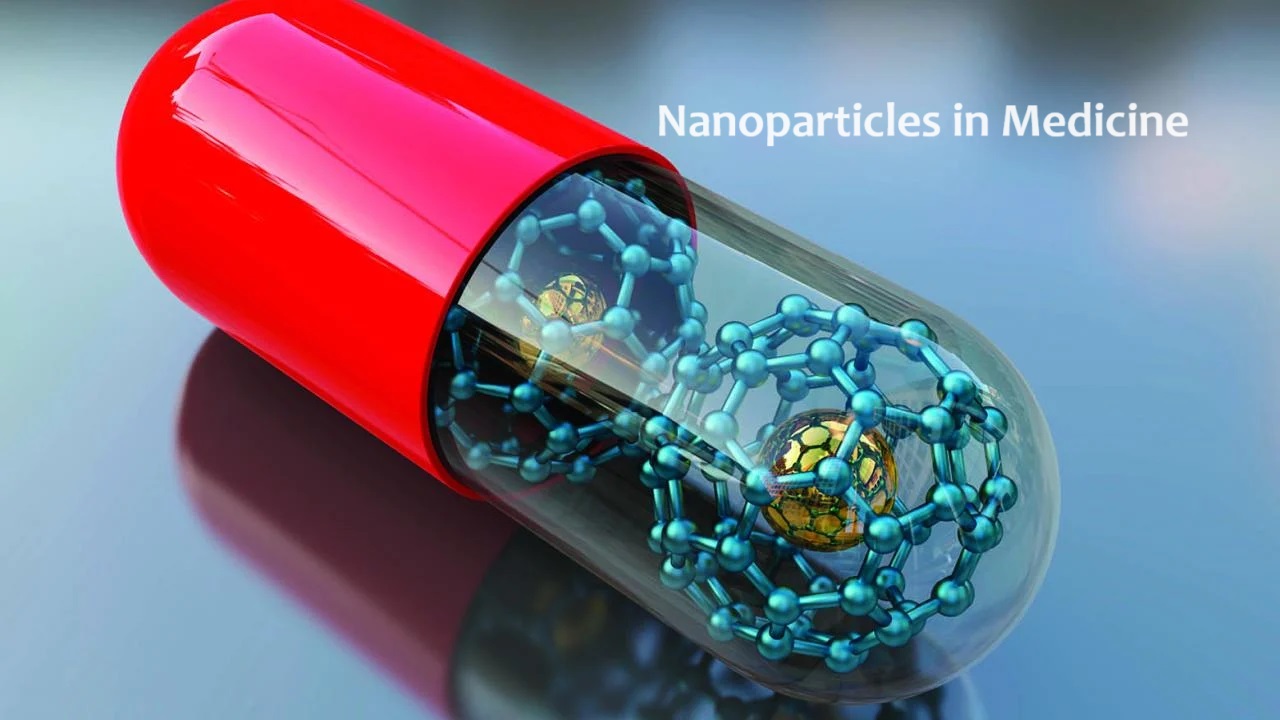In the realm of modern medicine, the integration of nanotechnology has ushered in a new era of innovation and possibility. Nanoparticles, particles with dimensions measured in nanometers, have emerged as powerful tools in various medical applications.
From targeted drug delivery to advanced imaging techniques, these miniature structures hold immense potential to revolutionize healthcare. In this comprehensive exploration, we delve into the types of nanoparticles utilized in medicine, elucidating their advantages and highlighting their role in cutting-edge fields such as nanotechnology eye drops and ophthalmology.

Types of Nanoparticles in Medicine:
Liposomes:
Liposomes represent one of the earliest and most extensively studied types of nanoparticles in medicine. Composed of lipid bilayers, liposomes can encapsulate drugs within their aqueous core or lipid membrane. This encapsulation allows for the targeted delivery of therapeutic agents to specific tissues or cells, minimizing systemic side effects. Liposomal formulations have been employed in the treatment of various diseases, including cancer, infectious diseases, and inflammatory disorders.
Polymeric Nanoparticles:
Polymeric nanoparticles are crafted from biocompatible polymers such as poly (lactic-co-glycolic acid) (PLGA) and chitosan. These nanoparticles offer a versatile platform for drug delivery, as their properties can be tailored to meet specific requirements. Polymeric nanoparticles can protect encapsulated drugs from degradation, prolonging their circulation time in the body.
Additionally, they enable controlled release kinetics, allowing for sustained drug release over extended periods. These characteristics make polymeric nanoparticles particularly well-suited for the treatment of chronic conditions and localized therapies.
Metallic Nanoparticles:
Metallic nanoparticles, such as gold and silver nanoparticles, have garnered significant attention in the field of nanomedicine. These nanoparticles exhibit unique optical, electronic, and catalytic properties that can be exploited for therapeutic and diagnostic purposes.
Gold nanoparticles, for instance, have been utilized in cancer therapy through photothermal ablation, where they absorb light energy and convert it into heat to selectively destroy cancer cells. Silver nanoparticles possess antimicrobial properties, making them promising candidates for combating infections and promoting wound healing.
Carbon-Based Nanoparticles:
Carbon-based nanoparticles, including carbon nanotubes and graphene oxide, offer intriguing prospects in medicine owing to their exceptional mechanical, electrical, and thermal properties. Carbon nanotubes, cylindrical structures composed of carbon atoms, have been investigated for their potential in drug delivery, tissue engineering, and biosensing applications. Graphene oxide, a two-dimensional carbon material, exhibits high surface area and biocompatibility, making it suitable for drug delivery systems and biomedical imaging.
Dendrimers:
Dendrimers are highly branched, tree-like molecules with a well-defined structure. These nanostructures can encapsulate drugs within their interior voids or functionalize their surface with targeting ligands for specific delivery to diseased tissues. Dendrimers offer precise control over drug loading and release kinetics, facilitating tailored therapeutic regimens. Moreover, their modular design allows for the incorporation of imaging agents for simultaneous diagnosis and treatment.

Advantages of Nanoparticles in Medicine:
The utilization of nanoparticles in medicine offers several distinct advantages over conventional therapeutic approaches:
Targeted Delivery: Nanoparticles can be engineered to selectively target diseased tissues or cells, minimizing off-target effects and enhancing therapeutic efficacy.
Enhanced Bioavailability: Encapsulation of drugs within nanoparticles protects them from degradation and improves their solubility, thereby enhancing their bioavailability and pharmacokinetic profile.
Controlled Release: Nanoparticles enable controlled release of encapsulated drugs, allowing for sustained therapeutic levels over extended periods and reducing the frequency of dosing.
Multifunctionality: Nanoparticles can be functionalized with various moieties, including targeting ligands, imaging agents, and stimuli-responsive triggers, enabling multifunctional platforms for diagnostics and therapeutics.
Reduced Toxicity: Targeted delivery of drugs using nanoparticles can minimize exposure to healthy tissues, thereby reducing systemic toxicity and adverse effects associated with conventional therapies.
Nanotechnology in Ophthalmology:
The application of nanotechnology in ophthalmology has witnessed remarkable strides in recent years, offering novel approaches for the diagnosis and treatment of ocular diseases. Nanoparticles hold immense potential in addressing challenges such as poor ocular bioavailability and the need for sustained drug release in ocular tissues.
Nanotechnology eye drops, for instance, have emerged as a promising strategy for delivering therapeutics to the posterior segment of the eye, bypassing ocular barriers and improving drug penetration. Additionally, nanoparticles-based ocular implants and sustained-release formulations offer prolonged drug release kinetics, enhancing patient compliance and treatment outcomes.
Conclusion:
In conclusion, nanoparticles represent a paradigm shift in modern medicine, offering unprecedented opportunities for targeted drug delivery, diagnostics, and therapeutics. With their diverse range of properties and functionalities, nanoparticles hold immense promise in addressing unmet medical needs and advancing the forefront of healthcare.
From liposomes to metallic nanoparticles and carbon-based nanostructures, the landscape of nanomedicine continues to evolve, ushering in a new era of precision medicine and personalized healthcare. As research in this field progresses, the integration of nanotechnology into clinical practice holds the potential to revolutionize the diagnosis and treatment of various diseases, including those affecting the eyes and vision.
⚠ Article Disclaimer
The above article is sponsored content any opinions expressed in this article are those of the author and not necessarily reflect the views of CTN News






